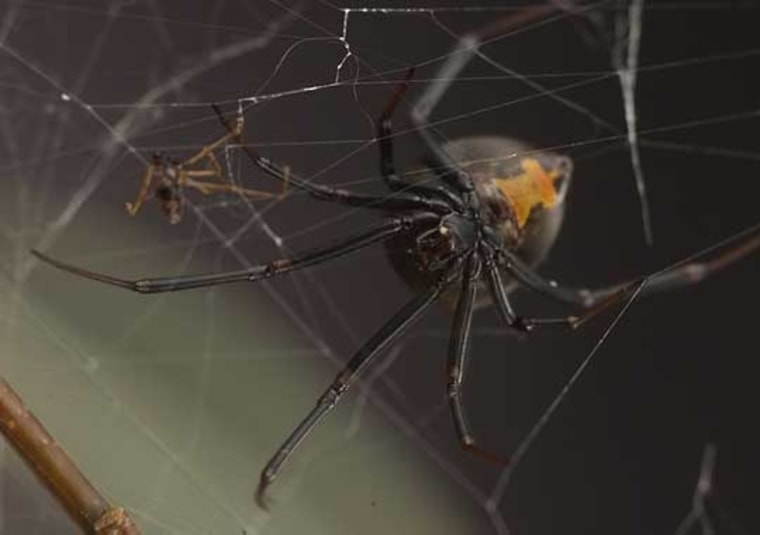Females of the Australian redback spider, one of the world's most poisonous spiders and a close relative to the black widow, demand 100 minutes of courting or else they usually cannibalize their male suitors, research finds.
Proving that bigger isn't always better in the mating game, the tiniest of males sometimes approach female redbacks after offering the critical 100 minutes of wooing and successfully mate without being eaten, according to the paper in the latest Proceedings of the Royal Society B.
The study shows that puny males of this species can win at love without exerting much effort and begins to explain the extreme size differences between males and females among some spider species.
"Based upon our data of the timing of premature lethal cannibalism, it appears as though females are not tuned to select male size, but rather the duration of courtship," co-author Jeffrey Stoltz told Discovery News.
Females don't even discriminate once the 100 minutes are up, Stoltza added, so other males can even scramble in at that point and win her favor.
Stoltz, a University of Toronto researcher, and colleague Maydianne Andrade analyzed Australian redback spiders bred from a population collected in Sydney. They focused on the spider's unique mating ritual.
A male first performs a lengthy "courtship dance," Stoltz said, where it vibrates the female's web and wraps it in his own silk to reduce the emission of pheromones that could attract other males.
He then drums on her abdomen with his palps, and may alternate between drumming and web dancing. If he does this for less than 100 minutes, Stoltz said that "the male will exclusively remain on the female's abdomen and then will insert his intromittent organ and perform a copulatory somersault and the female will begin consuming him."
If he meets her desired courtship threshold, he may be able to mate and survive. If not, he's usually eaten and then other males enter her web, sometimes fighting with each other to get to her.
"Females appear to act as a referee and strike at males with their forelegs as males escalate aggression towards one another," Stoltz added.
The bizarre process may help to explain why male widow spiders are often so much smaller than females. For this species, males carry 1 to 2 percent of the body weight of a typical female.
Smaller males likely mature faster and can therefore mate earlier in life, Stoltz explained, and tiny males could be better equipped to scramble faster towards females and their webs. Bigger females, on the other hand, may have greater reproductive success, so the species winds up with enormous females and minuscule males.
Mariella Herberstein, a senior lecturer in the Behavioral Ecology Group at Macquarie University, conducts research on sexual selection and cannibalism in spiders sees two "significant conclusions" in the research.
"First," she said, "it is one of the few demonstrations of the existence of threshold-based mate choice. Second, it helps to understand the maintenance of seemingly sub-optimal male phenotypes."
"The question that remains is why females have not evolved a way of discriminating between two courting males in her web," Herberstein added. "It may be that distinguishing the sources of vibrations in a complex three-dimensional web, such as those of redback spiders, is very difficult, an aspect that males clearly take advantage of."
